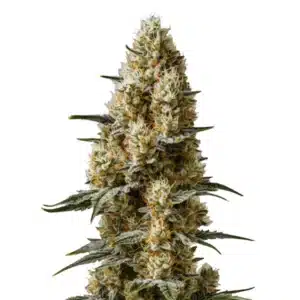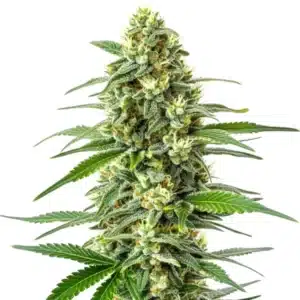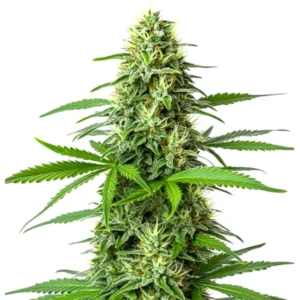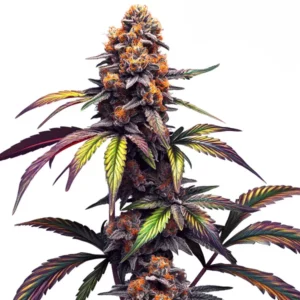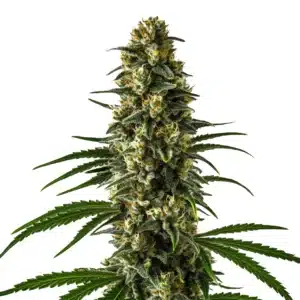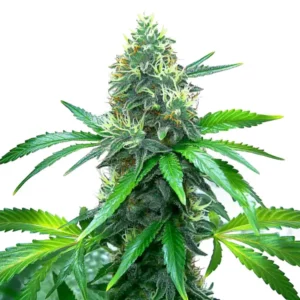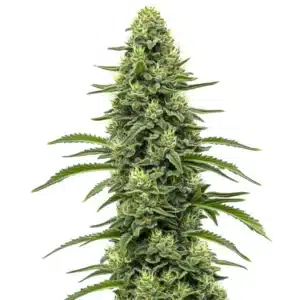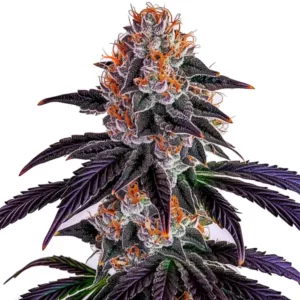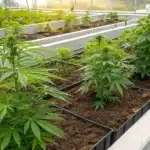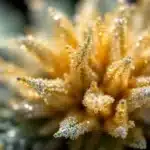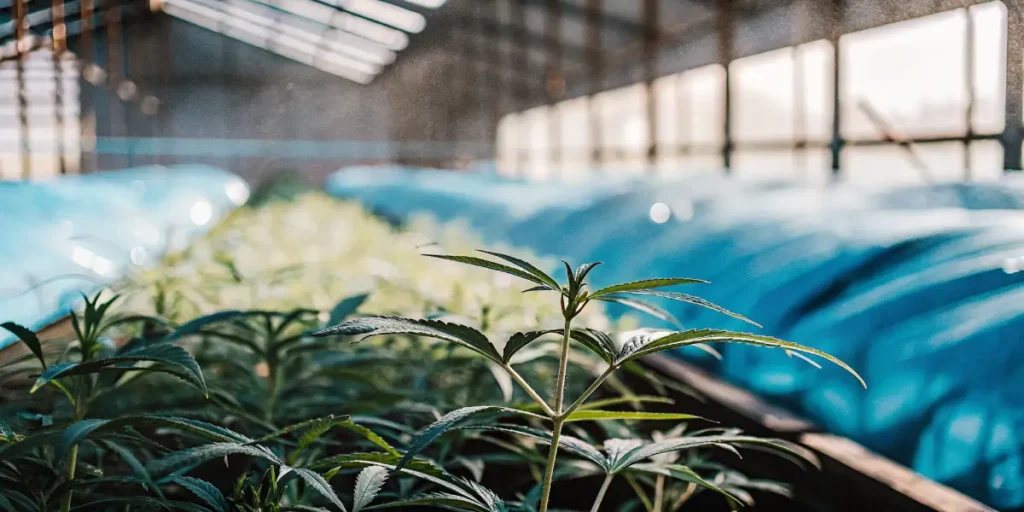
Using biostimulants to regulate ROS in weed plants: boost stress resistance & growth
Many growers face challenges when it comes to maintaining healthy weed plants. Often, these problems stem from the harmful effects of reactive oxygen species (ROS). ROS are unstable molecules that can damage cells if not properly managed. Using biostimulants to regulate ROS in weed plants can be a game-changer.
Biostimulants are natural or synthetic substances that enhance plant growth and resilience. They help manage oxidative stress, which is caused by an imbalance between ROS production and the plant’s ability to detoxify them. By using biostimulants, growers can improve their plants’ health and yield.
Recommended Strains
Blue Dream
|
|
THC | 17% - 24% (Medium) |
|
|
Type | Feminized |
|
|
Yield | High |
|
|
Phenotype | 50% Indica / 50% Sativa |
GG4
|
|
THC | 27% (High) |
|
|
Type | Feminized |
|
|
Yield | High |
|
|
Phenotype | 40% Indica / 60% Sativa |
Consider the famed Blue Dream strain. Known for its potency and sweet aroma, Blue Dream can benefit immensely from biostimulants. It helps the plant manage ROS, resulting in a healthier and more robust growth cycle.
Biostimulants Impact on Weed Plant ROS Regulation
Biostimulants come in various forms, including seaweed extracts, humic substances, and amino acids. These products boost the plant’s natural defense mechanisms, aiding in the regulation of ROS levels. This is crucial for preventing oxidative stress, which can hinder plant growth and reduce yield.
For instance, humic substances improve soil health, which in turn strengthens the plant’s root system. A stronger root system can better absorb nutrients and water, which is essential for managing ROS levels effectively. This is particularly beneficial for strains like Gorilla Glue #4, known for its high resin production.
Biostimulants impact on weed plant ROS regulation is profound, as they fortify the plant’s internal processes. They enhance the efficiency of nutrient uptake and water absorption, ensuring that the plant remains well-nourished and hydrated. This directly contributes to a balanced ROS level, which is vital for optimal plant health.
Furthermore, the use of biostimulants fosters a more resilient plant structure, capable of withstanding various environmental stresses. This resilience is crucial for maintaining a steady growth rate and maximizing yield. When growers understand the biostimulants impact on weed plant ROS regulation, they can make informed decisions to optimize their cultivation practices.
Oxidative Stress Management in Weeds Using Biostimulants
Oxidative stress occurs when there’s an imbalance between ROS and antioxidants in the plant. Using biostimulants to regulate ROS in weed plants is an effective strategy, as they boost the plant’s antioxidant production. This helps reduce the harmful effects of oxidative stress, promoting healthier growth and resilience.
Growers often notice that plants treated with biostimulants have greener leaves and stronger stems. This is because biostimulants enhance nutrient uptake and improve photosynthesis. Thus, the plant can better manage oxidative stress.
Oxidative stress management in weeds using biostimulants is a strategic approach that provides long-term benefits. By consistently integrating biostimulants into the cultivation process, growers can enhance the plant’s natural ability to fend off stressors. This proactive management not only ensures robust plant health but also leads to a more bountiful harvest.
Moreover, seeing the results of oxidative stress management in weeds using biostimulants encourages growers to explore further biostimulant applications. It opens pathways to experimenting with different formulations and combinations, allowing for a tailored approach to each specific strain’s needs.
Promos & Deals
Enhancing Weed Resilience Through Biostimulant Application
Applying biostimulants not only helps in ROS regulation but also enhances the plant’s overall resilience. This makes the plant more resistant to environmental stressors like drought, heat, and pests. A resilient plant can focus more on growth and yield rather than defense.
Regular application of biostimulants can lead to noticeable improvements in plant health. Growers should consider integrating biostimulants into their regular feeding schedule. This has proven beneficial for many cannabis strains, leading to better harvests.
Enhancing weed resilience through biostimulant application is a critical component of modern cultivation strategies. By fortifying the plant’s defenses, growers can ensure that their crops thrive even under adverse conditions. This resilience translates into not only better growth but also improved quality and potency of the yield.
The key to enhancing weed resilience through biostimulant application lies in knowing the specific needs of each plant. By tailoring the types and amounts of biostimulants used, growers can maximize the benefits, ensuring that their plants are well-equipped to handle whatever challenges come their way.
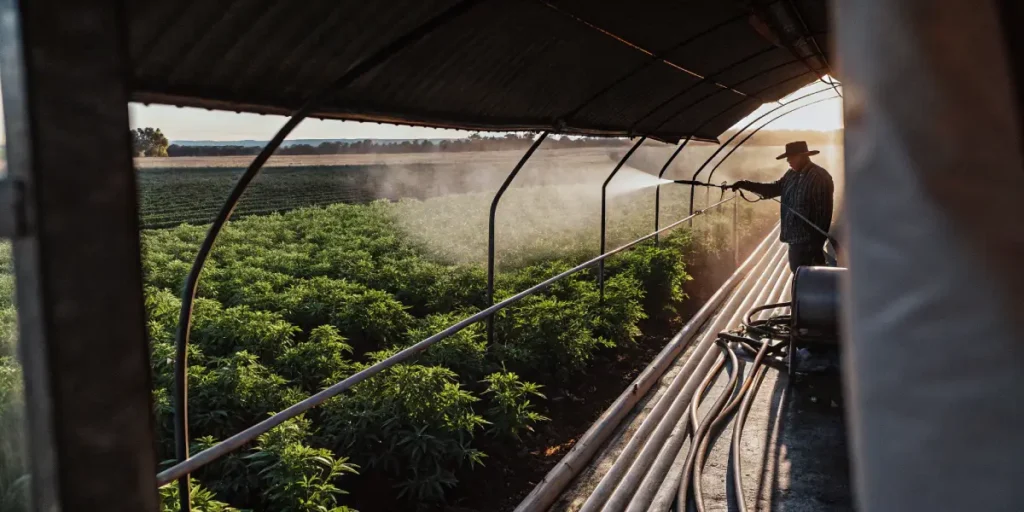
Role of Biostimulants in Weed Oxidative Stress Control
Biostimulants act as a catalyst in the plant’s internal processes. They enhance the plant’s ability to produce antioxidants, which are vital in controlling oxidative stress. By boosting the plant’s natural defenses, biostimulants help maintain a healthy ROS balance.
Plants such as Blue Dream and Gorilla Glue #4 show improved growth when biostimulants are used. This is because they can manage oxidative stress more efficiently, leading to better nutrient absorption and photosynthesis.
The role of biostimulants in weed oxidative stress control cannot be overstated. They serve as a crucial tool in the grower’s arsenal, providing a means to manage and mitigate the detrimental effects of oxidative stress. This control is essential for maintaining the plant’s vitality and ensuring a successful growth cycle.
By knowing the function of biostimulants in weed oxidative stress control, growers can adopt a more scientific approach to cultivation. This involves monitoring the plant’s response to different biostimulants and making adjustments as needed to optimize the stress control strategy and achieve the desired outcomes.
Biostimulant Strategies for ROS Management in Weeds
There are several strategies growers can employ to use biostimulants effectively. First, identify the specific needs of your cannabis strain. Some strains require more attention than others when it comes to ROS management.
Next, choose the right type of biostimulant. For instance, seaweed extracts are excellent for enhancing nutrient uptake, while amino acids boost stress resistance. Tailoring the biostimulant to your plant’s specific needs is crucial.
Biostimulant strategies for ROS management in weeds are diverse, offering growers a range of options to optimize plant health. One effective strategy is to combine different types of biostimulants to create a holistic approach. This combination can address multiple aspects of plant health, from nutrient uptake to stress resistance.
Consistency in application is also a critical component of biostimulant strategies for ROS management in weeds. Regularly applying the chosen biostimulants ensures that the plant receives a steady supply of the necessary compounds, leading to sustained health benefits and improved growth outcomes.
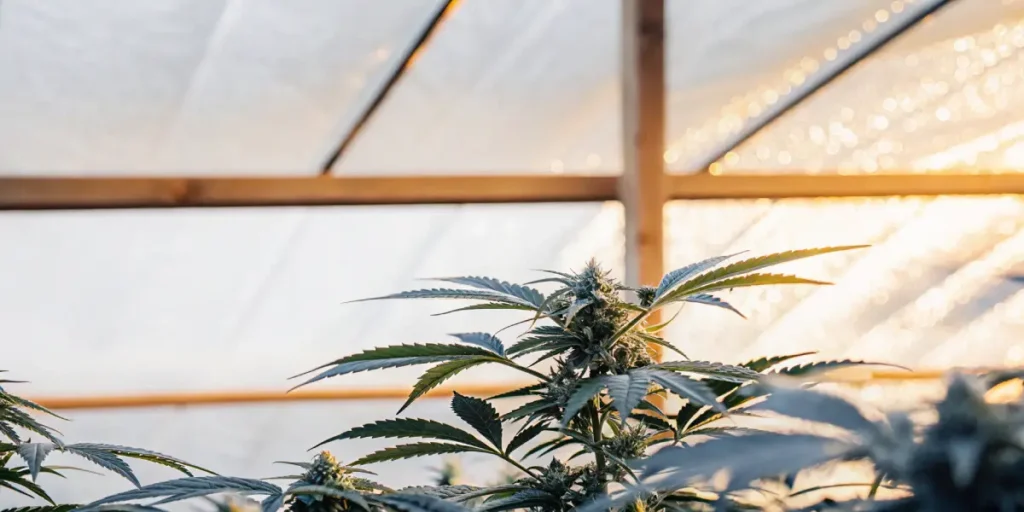
FAQs
What are reactive oxygen species (ROS) in weed plants?
ROS are unstable molecules that can damage cells in weed plants. They are byproducts of various metabolic processes and, if not managed properly, can lead to oxidative stress. Oxidative stress harms the plant’s growth and yield potential.
Using biostimulants to regulate ROS in weed plants can help maintain balance. By boosting the plant’s natural defenses, these products minimize the harmful effects of ROS, promoting healthier and more robust growth.
Knowing the nature of reactive oxygen species (ROS) in weed plants is crucial for effective cultivation. These molecules, while naturally occurring, can become problematic if their levels exceed the plant’s capacity to neutralize them. This highlights the importance of interventions such as biostimulants to maintain equilibrium.
Moreover, growers who grasp the concept of ROS and its implications on plant health are better equipped to implement targeted solutions. Using biostimulants to regulate ROS in weed plants is one such solution that has proven effective in enhancing plant resilience and productivity.
How do biostimulants help in managing oxidative stress?
Biostimulants enhance the plant’s natural antioxidant production. Antioxidants are crucial in neutralizing ROS, thus reducing oxidative stress. This helps in maintaining cell integrity and promoting healthy plant growth.
Whether you’re growing Blue Dream or Girl Scout Cookies, using biostimulants consistently can lead to healthier plants. They work by improving nutrient uptake and enhancing stress tolerance, leading to better yields.
The mechanism by which biostimulants help in managing oxidative stress is rooted in their ability to augment the plant’s natural processes. By stimulating antioxidant production, these substances provide the plant with the tools needed to combat the potentially damaging effects of ROS.
Furthermore, biostimulants contribute to overall plant vigor by enhancing various physiological functions. This holistic support not only aids in managing oxidative stress but also prepares the plant to thrive under diverse growing conditions.
Can biostimulants be used with all cannabis strains?
Yes, biostimulants are versatile and can be used with all cannabis strains. However, it’s essential to tailor the type of biostimulant to the specific needs of your strain. Some strains may require more attention to ROS management than others.
For example, strains like Gorilla Glue #4 benefit from biostimulants that enhance resin production. You’ll notice improvements in growth and potency when the right biostimulants are used.
The adaptability of biostimulants makes them an invaluable tool for growers working with a variety of cannabis strains. By knowing the unique characteristics and requirements of each strain, growers can select the appropriate biostimulants to achieve optimal results.
Moreover, the versatility of biostimulants allows for experimentation and customization. Growers can develop specific protocols that cater to the distinct needs of their crops, ensuring that each strain receives the targeted support it requires for maximum health and productivity.
What types of biostimulants are most effective for cannabis?
There are several types of biostimulants, each offering unique benefits. Seaweed extracts are excellent for nutrient uptake, while humic substances improve soil health. Amino acids boost stress resistance.
Choosing the right biostimulant depends on your specific cannabis strain and its needs. Regular application and consistency will yield the best results.
When considering what types of biostimulants are most effective for cannabis, it’s important to evaluate the specific needs of the plant. For instance, if the goal is to enhance root development, humic substances may be the preferred choice. Conversely, for improving photosynthesis and nutrient absorption, seaweed extracts might be more suitable.
Ultimately, the effectiveness of a biostimulant is closely linked to its alignment with the plant’s requirements. By carefully assessing the plant’s condition and growth targets, growers can make informed decisions that leverage the full potential of biostimulants.
Is there a risk of overusing biostimulants in weed plants?
While biostimulants are beneficial, overuse can lead to nutrient imbalances. It’s essential to follow the recommended dosages and guidelines provided by the manufacturer. Overapplication can lead to issues like nutrient burn.
Stick to a regular feeding schedule and monitor your plants closely. Adjust the biostimulant application as needed to ensure your plants remain healthy and productive.
Knowing the risk of overusing biostimulants in weed plants is crucial for maintaining plant health. While these substances offer numerous benefits, excessive use can disrupt the delicate nutrient balance within the plant and in the soil.
By adhering to recommended guidelines and observing plant responses, growers can effectively manage the use of biostimulants. This careful approach ensures that the plants receive the right amount of support without the adverse effects of overapplication.




